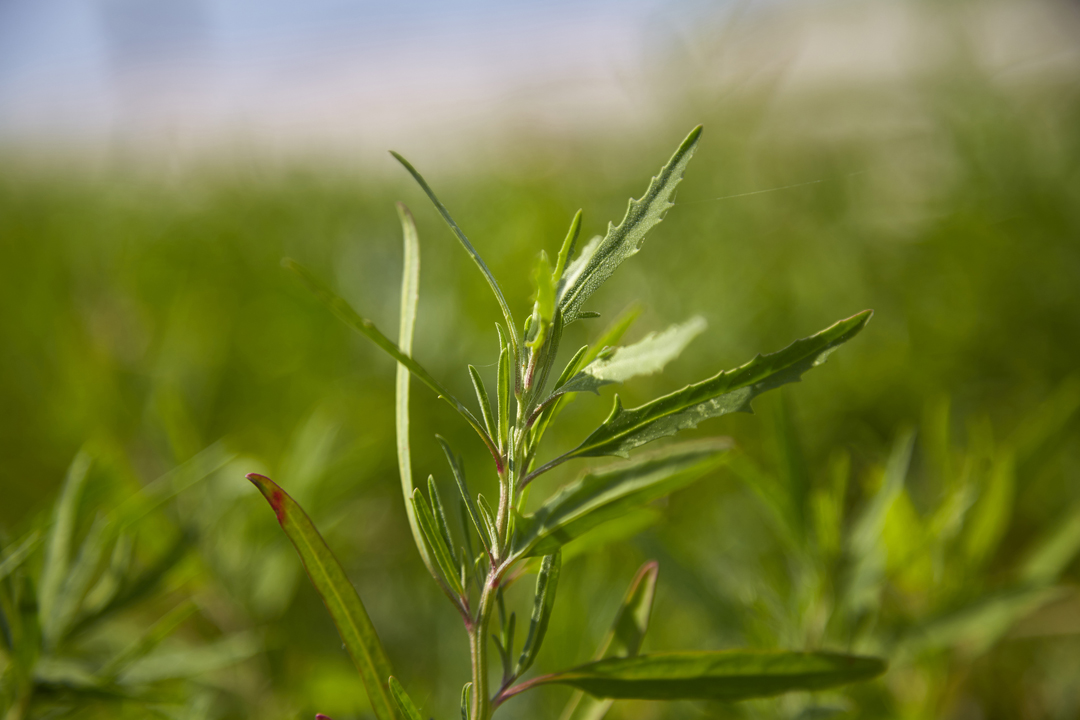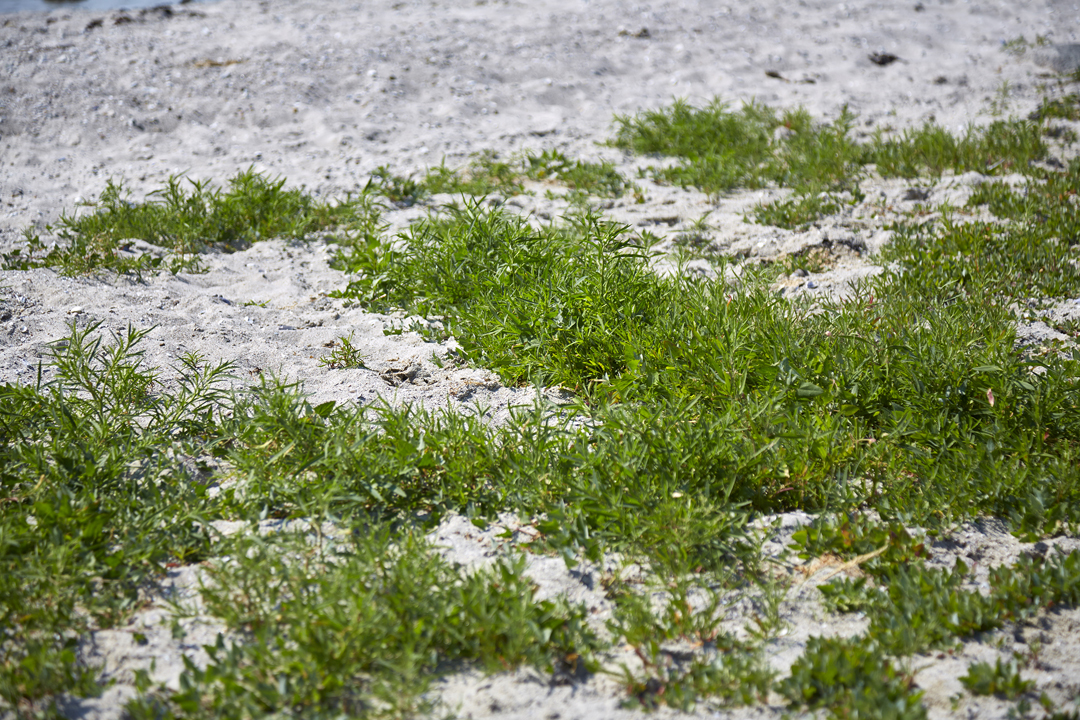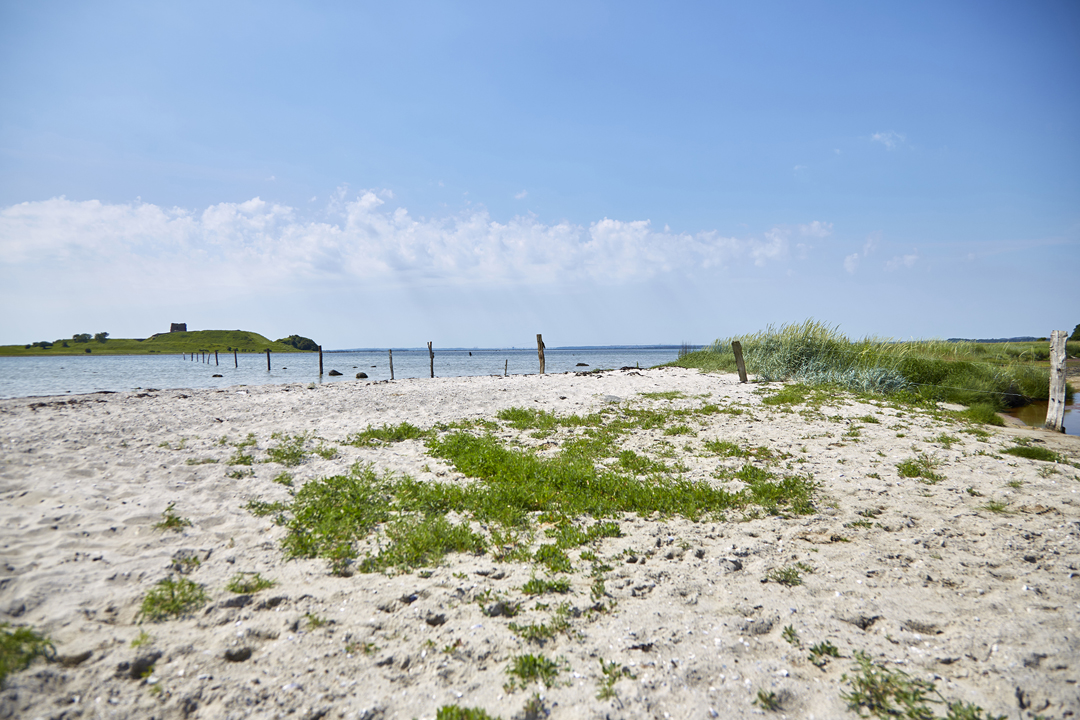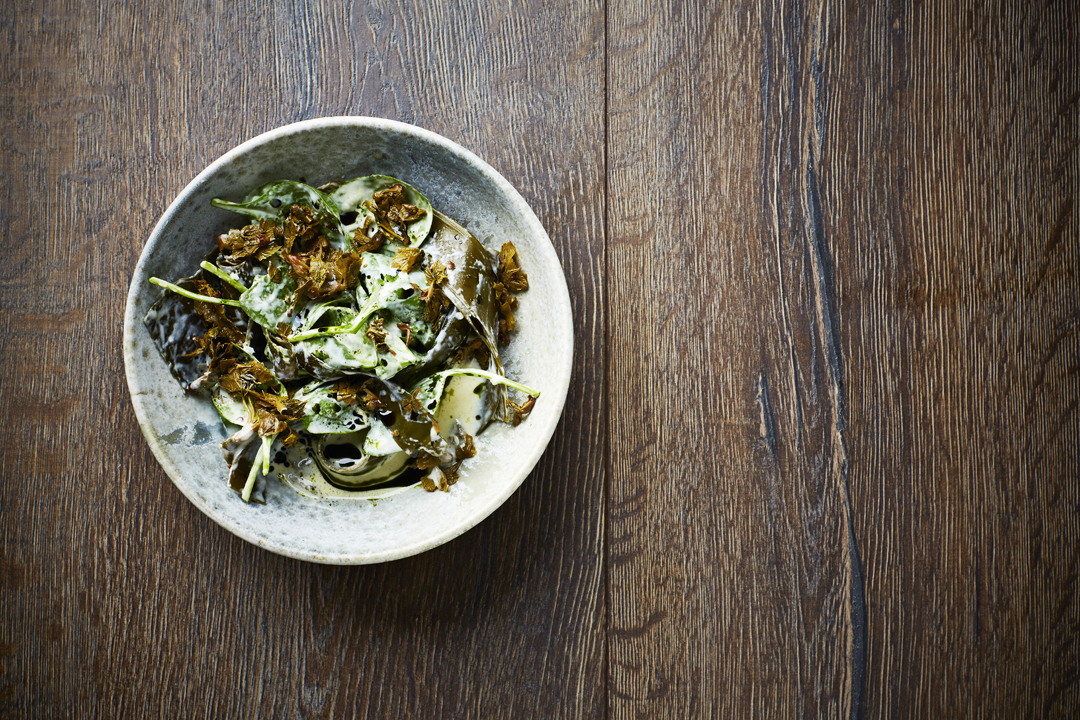



Grassleaf orache
Grassleaf orache is the leafy green of the seashore—it can be used much in the same way as spinach. It often grows in abundance and can carpet large areas in green.
-
Where to Find It
Grassleaf orache secretes salt from its leaves, so it can survive even in very salty areas. It can also withstand wind, though only if it’s indirect and sporadic. Its succulent leaves retain a salty liquid that enables it to tolerate full sun. On the beach, it extracts nutrients from washed-up, decomposing seaweed. You can find grassleaf orache a little ways up from the shoreline or in areas around beached seaweed.
Beach.
-
When to Find It
From April until July, you can harvest the whole plant or just take its top shoot. In August, you can harvest the seeds of the grassleaf orache and its individual leaves.
Entire plant and shoots: April, May, June, July. -
How to Spot It
Grassleaf orache is a matte, greyish-green herb that typically grows 35-80 cm tall. Its stem is green and at times reddish at the base. It has long, tapered, fleshy leaves that are four to eight cm long and have a line running down the middle; sometimes their edges are slightly ruffled. It branches out, leaving large spaces between its leaves and branches in spring. Early on, it can look a bit scrawny, but over the course of the season it becomes thicker and bushier. The flowers are small and green or dark red and grow in clusters along the top shoots.
-
How to Pick It
You can use both the stem and leaves of grassleaf orache as long as you stick to the tender, succulent parts. In spring when the plant is young and fresh, pick above the bottom set of leaves so it can continue growing. Later in the season when it's gotten bigger, pick the top shoots where the stem is still soft and can be broken off. In August, collect individual leaves at the top of the plant and its flowers.
-
NB!
The Ministry of Environment and Food of Denmark recommend limited consumption, due to limited knowledge and studies.
Seeds and individual leaves: August
Risk of misidentifying the plant
There is no risk of mistaking the plant for another dangerous or undesirable plant.


